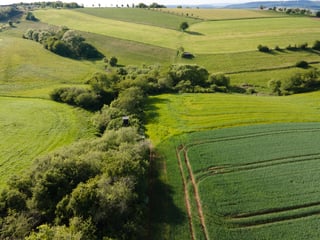Plant and animal biodiversity should be viewed as an important element of natural capital on farmland – not only because biodiversity protection benefits the environment and wider society, but also because it offers tangible business opportunities to farmers.
The Importance of Biodiversity on Farmland
Biodiversity on agricultural land encompasses all forms of animal and plant life, whether that be farmed or wild. This ranges from different crop varieties and livestock breeds to every type of pest and pollinator.
Farming and biodiversity are mutually dependent on each other. For example, European Commission data shows there are at least 63 habitat types that benefit from farming activities, or even depend on agriculture to exist.
On the flipside, agricultural productivity relies on the biodiversity of plant and animal species.
Whether it’s food or fibre production, these different species and organisms are fundamental to maintaining fertile soil, pest and disease resistance, and pollination – all of which crops and livestock need to grow successfully.
Protecting Farm Biodiversity
A healthy state of biodiversity is central to a productive agricultural system, however there’s serious concern about the degradation of our biodiversity in the UK.

The 2019 State of Nature report showed evidence that 70% of all UK animal and plant species are in decline, which means striving to achieve ‘biodiversity net gain’ – where biodiversity is left in a better state than it was before - has never been more important for farmers.
Not just for societal benefit, there are practical benefits to farmers who protect the biodiversity on the land they manage. For example, if a farmer invests in maintaining and protecting hedgerows and wildlife areas on-farm, they can support invertebrate populations, which has positive effects for pest management, soil health and pollination.
There are also growing opportunities to monetise farm biodiversity. Like carbon credits, the sale of biodiversity credits could be a form of diversification for farmers in future, providing another income stream alongside existing operations.
Reducing Biodiversity Loss
Investment in regenerative agriculture practices is another way to protect animal and plant species in the countryside, by minimising biodiversity loss.
An increasing proportion of farmers in the UK are reducing their tillage practices to prevent the loss of organisms in the soil, which can have the benefit of improving future crop health.
There’s also the option to move away from artificial fertilisers for a more natural weed management solution - this helps prevent the loss of natural nutrients in the soil.
For further detail, read our blog on the nature-friendly benefits of a regenerative approach to farming.
Understand your Biodiversity
The first step to understanding the opportunities to enhance and protect biodiversity on your farmland is creating a baseline of what you currently have.
The first tier of our LAND360 service, Mapping+, uses remote-sensing and geographic information systems to map out an area of land into different habitat areas, while assigning each a biodiversity value.
The next step, Scoring+, involves a farm visit from our scientists to assess each habitat more closely and rate them as good or poor quality. This allows a farmer to pinpoint areas for improvement, and then model different scenarios on the habitats to see where there is scope to monetise biodiversity.
Read more details on the full LAND360 package here.